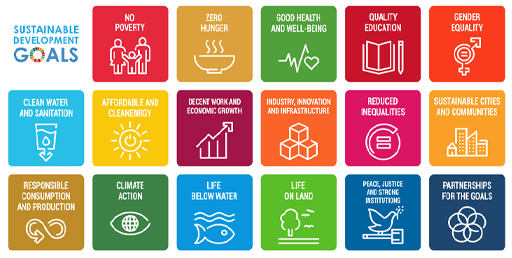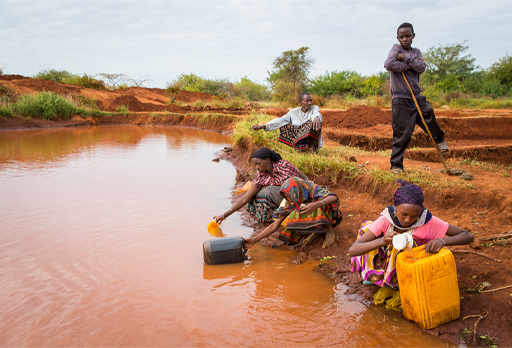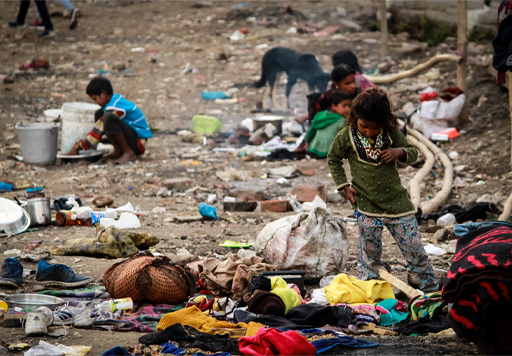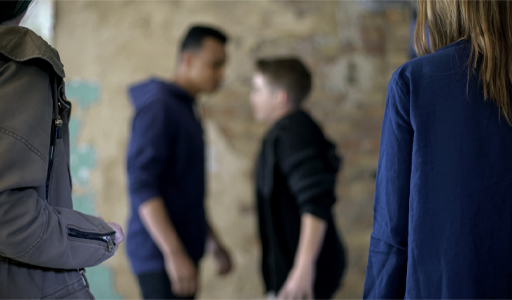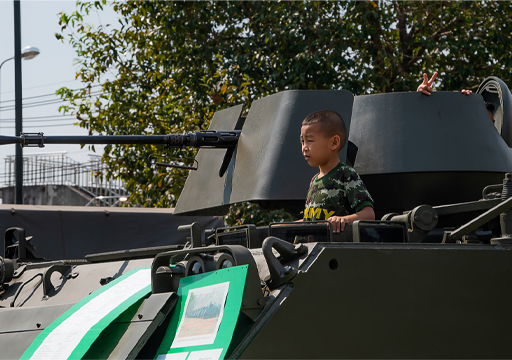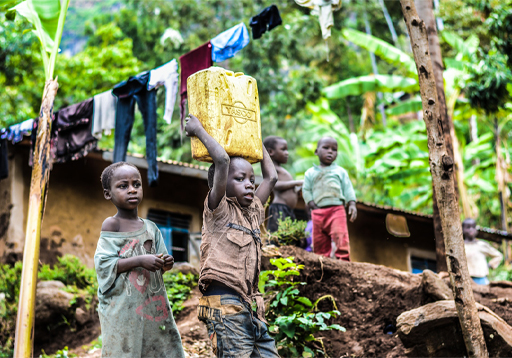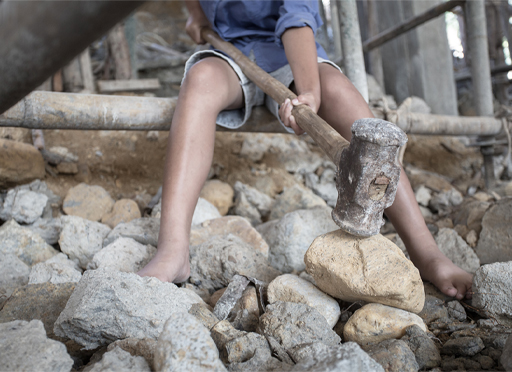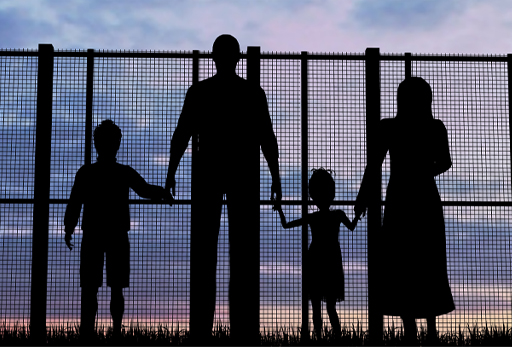Use 'Print preview' to check the number of pages and printer settings.
Print functionality varies between browsers.
Printable page generated Friday, 21 November 2025, 7:43 AM
Session 4: A global view of children’s mental health and wellbeing
Introduction
Children’s mental health is a global issue. Wherever children live in the world, there are factors and influences within their society that impact on their mental health. The COVID-19 pandemic of 2020 is an example of an event that has impacted on the physical and mental health of children and their families around the world. As you explored in Session 1, the systems around the child have a profound impact on their wellbeing and, in turn, this impacts on their mental health – for good or bad. For instance, the effects of war, conflict and the influence of economic factors mean that migration of people from country to country is an ongoing issue; without resolutions to the conflicts that are causing people to be displaced from their homes, this is likely to continue. The migration of people is often reported in the media; however, the impact of migration on children is under-reported.
In this session, you will examine children’s wellbeing and mental health from a global perspective.
Now listen to the audio introduction to this session.
Transcript: Audio 1
By the end of this session, you will be able to:
- form an overview of the impact of a country’s geography and politics on children’s wellbeing
- explore social, economic and cultural influences on children’s wellbeing and mental health
- appreciate some of the effects of migration on children’s wellbeing and mental health
- re-examine the role of resilience in helping children cope with difficult, dangerous and traumatic circumstances.
1 Influences and factors that can impact on children’s wellbeing and mental health
Many factors can affect children’s mental health. This includes where they live in the world, the politics of their home country, their family’s economic status, and their social and cultural beliefs. Another significant factor that can impact on children’s mental health is how the society in which they live regards their status and upholds their rights. In the following sections, you will explore each of these factors.
1.1 Geography
The connection between the geography of a country and the effect on children’s mental health may not always be entirely obvious. However, the climate of a country can make the environment range from either ‘hostile’ to ‘welcoming’. For example, in countries with extreme climates, such as some tropical countries, the climate predisposes the country to be the home of many diseases and parasites, both of which can negatively impact on children’s health. This in turn can affect quality of life. The impact of disease and more extreme climates on long-term health and wellbeing is multifaceted and interconnected with poverty, access to medical care and clean water. All of this can impact negatively on wellbeing and predispose children to compromised mental health.
Natural disasters have also been shown to have an impact on children’s mental health. Research following the earthquakes that affected New Zealand in 2010 and 2011 has shown that the stress experienced as a consequence of the aftermath impacted on children’s mental health.
New Zealand media reported research findings showing that some children demonstrated behaviour disturbance and increased levels of anxiety and depression following the disasters (McCrone, 2014). There has also been a reported spike in adolescent suicides linked to the longer-term impact of the trauma experienced in earlier childhood because of the earthquakes. These examples highlight the link between geography and how the environment can impact on children’s wellbeing. It is not surprising that children who live in geographically hostile environments or in countries which are prone to natural disasters can become anxious and develop mental health issues.
Extremes in climate and natural disasters are just two examples of how the geography of a country can impact on children’s mental health and wellbeing. As you explored in Session 1, how much can be done to reduce the impact of geographical factors on children’s mental health and wellbeing will partly depend on the resources that are within the systems around the child.
1.2 Politics
The politics of a country can have a powerful influence on children’s mental health. For example, children who live in low-income countries are less likely to have access to health services and an education beyond secondary school. The United Nations (UN) Sustainable Development Goals aim to improve the lives of all people in low-income countries and to ‘address the global challenges we face, including those related to poverty, inequality, climate, environmental degradation, prosperity, and peace and justice’ (UN, 2019).
There are 17 goals, which often overlap and interrelate.
Goal 3 is related to good health and wellbeing. While there is no specific emphasis on children’s mental health and wellbeing, improving health and reducing threats to health will, in turn, reduce the number of children who are orphaned (a major threat to a child’s wellbeing), improving their mental health and wellbeing.
1.3 Economic influences
Living in chronic poverty often has a negative impact on children’s mental health and wellbeing. In many parts of the world, especially in low-income countries, children are often relied on to make a significant material contribution to the family in ways that children in middle- and high-income countries are not expected to. As you will explore later in this session, children as young as seven may become part of the paid workforce in order to earn money to ensure their family's survival.
In countries where water is scarce, it is often the responsibility of young girls to collect the water needed for cooking and drinking from a water hole, which often requires them to walk long distances every day. This in turn negatively impacts on their ability to get an education, because the priority is obtaining the water necessary for their family. The need for children to contribute in these ways is essential for the health and existence of the family; however, it often comes at a cost to children’s mental health and wellbeing.
1.4 Social and cultural influences
The culture (or cultures) of any given society has a powerful influence on children’s mental health and wellbeing. In some African cultures, it is believed that witchcraft is the cause of some medical conditions, for example epilepsy (Tedam, 2014). Meanwhile in Western countries, such as the UK, mental health conditions are still stigmatised, which is evident when people use diagnostic terms like schizophrenia in derogatory terms. Across the globe, there is gender inequality, and because of this inequality, girls often miss out on an education. In the USA, where there have been a number of mass shootings in schools, the so-called ‘gun society’ has had an impact on children’s mental health (Currie, 2013).
1.5 The status of children
Where children live in the world has a significant influence on their mental health and wellbeing. However, in many countries and within many societies, the value and status of children across the world has changed considerably within the last 100 years.
According to Save the Children’s (2017) Global Childhood Report, millions of children across the world have benefited from the many medical and technological advances that people living in higher income countries often take for granted. Children’s overall wellbeing has improved as a result. These advances have included:
- development of, and greater access to, vaccines to prevent communicable childhood diseases
- better healthcare and support for mothers, children and their respective family networks
- more effective support for vulnerable children within their local communities via charities and other organisations in remote areas of the world
- efforts made by governments and other agencies across the world to help poorer countries become more economically self-sufficient
- increased access to clean water.
The first Declaration of the Rights of the Child was adopted by the League of Nations in 1924, inspired by Eglantyne Jebb, who founded Save the Children in 1919. This important declaration stressed various key rights for all children – such as the right to food, healthcare, education and protection from exploitation – which, at the time, were not seen as a priority in many policy-making decisions. Even though it was not a binding legal document, it meant there was a duty placed on the international community to put children’s rights at the centre of all planning in matters that affected children’s daily lived experiences. This was clearly a major shift in thinking.
The Convention on the Rights of the Child, subsequently adopted in 1989, has been approved by all but one nation (the US) (UNICEF, 2017). This Convention has had a further significant effect on the way that children are both viewed and treated. They are now viewed as human beings with their own independent set of rights, and sense of agency, instead of the passive recipients of adult care and charity.
The process of changing attitudes on a global scale has undoubtedly been slow. However, more nations and governments now value access to schooling for all children instead of accepting children toiling in fields and factories or living in vulnerable and unsanitary circumstances on the streets. There are now also more laws to prevent child labour and child marriage, and to make school free and available to all children, regardless of their gender, race, immigration status or special needs.
Activity 1 The UN Convention of the Rights of the Child
Go to the UNICEF website and find out briefly what this organisation does.
Then scroll down a short way and either follow the link or use this link to read the summary of children’s rights.
Clearly all the rights mentioned are extremely important; however, for the purpose of this activity, choose three particular rights and note down what you think these might mean in terms of adults supporting children in the daily experiences that they might encounter.
Discussion
As you read and follow through the activities in the next section ‘Different childhoods’, it would be useful to refer back to the articles within the UN Convention on the Rights of the Child and see how different practices are violating these fundamental rights.
2 Different childhoods
As you have already seen, the country and society that a child is born into can have a significant impact on their mental health and wellbeing. The following sections invite you to consider the lives of children who are experiencing childhoods that may be different from children living in a high-income country such as the UK.
2.1 Street children
Large numbers of children live on the streets of big cities and towns in countries such as India, Bangladesh and Ghana, where families are struggling to make ends meet.
Children live on the streets for a number of reasons, such as:
- poverty – when a family is unable to afford to feed a child
- becoming orphaned
- running away from home because of abuse
- beliefs such as witchcraft where children are regarded as being possessed by evil spirits, which can bring bad luck to the family, so they are thrown out of the home.
Western countries like the UK also have issues to do with homelessness. For children, this is to do with poverty and other factors which lead to them becoming temporarily homeless (or in precarious housing situations). Older children in the UK, like children overseas, also run away from home. This is an ongoing issue for lesbian, gay, bisexual and transgender (LGBT+) youth, many of whom are ‘coming out’ while at school, due to hostile home environments.
Activity 2 Rescuing children from the streets of India
The following video is 16 minutes long, but you could just watch the first five minutes for a glimpse into the reality of the lives of ‘street children’ and the challenges of offering appropriate support.
When you have finished watching the video, note down three issues that struck you as being particularly difficult for adults who might be attempting to help street children.
Discussion
Children who have been forced to leave home and then need to learn how to survive on the streets are often labelled ‘throwaway’ children, which clearly gives the impression that they are unwanted, disposable items. Such children are also present in more prosperous societies. For example, there are at least 2.5 million children who are homeless in the US each year. That figure is equivalent to 1 in 30 children in the country (American Institutes for Research, 2014).
Quite often, street children have not completely broken all their family ties. They may be sending money home and visiting, even if on an irregular basis. Clearly, the longer these children remain living on the street, the more likely they are to experience poor physical and mental health. Street children are particularly vulnerable to exploitation and danger. In addition, their mental health is at risk because of the increased likelihood of becoming involved in consuming alcohol and/or drugs from a young age. Additionally, feelings of shame, rejection, loss and homesickness can impair their mental health.
Many children do somehow manage to survive living on the street by developing various coping strategies. Many children form groups or ‘street gangs’ that might offer more protection than they would have received at home. Gangs may become family substitutes and can even be organised in terms of the roles found in a conventional family, with all members respecting the ‘rules’ and older ‘siblings’ looking after younger children.
Gangs can protect children against violence from other street children. They can also protect against police assaults and harassment, as well as the threat posed by members of the public who perceive street children as ‘delinquents’. Gang members can also look after each other when they are ill or injured, therefore fulfilling some of their needs for love, a sense of belonging and emotional support. For more information about street children, see the Dundee University StreetInvest project: the link to the research is in the ‘Further reading’ section at the end of the session.
2.2 Child soldiers
In countries such as Sierra Leone, Afghanistan and the Philippines where there is or has been war or armed conflict, thousands of children have been forced to become soldiers. Often, they are recruited as cheap labour and, because children often go ‘under the radar’ of adults, they can be useful spies.
However, as you’ll see in the video in the next activity, they are also trained to kill. In civil war, this may involve attacking people within their own communities.
Activity 3 Experiences of a child soldier
Watch the following short video from Unicef, which recounts the experience of James, who was taken to be a child soldier. James’ story is presented as an animation, but you may find the content upsetting.
Now consider the following questions:
- Do you think James had a choice about becoming a soldier?
- Can you try to imagine the feelings he experienced while shooting at people in his own village?
- After he returned to his village, what do you think the impact of being a soldier will have had on James, his family and the people in his village?
Discussion
You may have decided that James did not have a choice about becoming a child soldier: he would have been shot if he didn’t cooperate, and there would have been repercussions on his family. The feelings that James would have had when he was forced to shoot his own friends, neighbours and even his own family are difficult to imagine, but again, he had little choice.
James had a terrible experience, but he was lucky to have been rescued and returned to his village. The immediate euphoria of being reunited with his family may soon have been replaced by feelings of guilt over what he had been forced to do in order to survive. James may have felt that he no longer belonged to his village in the same way that he did before he became a child soldier. Perhaps the villagers blamed him for some of his actions rather than the adult soldiers who recruited him.
Of course, this is speculation; how James viewed his future at that time, and how his physical and mental health was following his experiences will have depended on the support he was able to access, as well as the resources that were available to him.
2.3 Child labour
According to UNICEF (2017), an estimated 246 million children within the world’s population are engaged in child labour. Furthermore, around one in four children aged 5–17 in the world’s poorest countries are involved in child labour. Child labourers are deemed to be:
- children who are too young to work
- children who are engaged in dangerous or exploitative work that is detrimental to their health and wellbeing.
Such work includes:
Agriculture
Children may:
- be exposed to toxic pesticides or fertilisers
- use dangerous blades and tools
- carry very heavy goods.
Mining
Children may have to:
- use poisonous chemicals
- face risks of mines collapsing
- work with explosives.
Construction
Children may:
- carry heavy loads
- work at heights without safety equipment
- risk injury from dangerous machinery.
Manufacturing
Children may:
- use toxic solvents
- perform repetitive tasks in painful positions
- risk injury from sharp tools.
Domestic work
Children may:
- risk abuse
- work long hours
- often live in isolation away from their families and friends.
Children working in such conditions are essentially being deprived of their right to a ‘playful childhood’ because they are working. They are also more liable to encounter physical, social and psychological stresses that prevent them from interacting and socialising with peers.
Their education is affected because they are subject to disrupted schooling. Such disruption can then have serious consequences in terms of any future opportunity for safer or more financially rewarding employment. This can ultimately decrease their life chances and sense of self-fulfilment.
Low pay, high degrees of responsibility at a young age, lack of access to education as well as insufficient care and protection can all lead to heightened anxiety and lowering children’s self-esteem and feelings of autonomy.
In the next section, you’ll read a case study about Aamira, a refugee from Sudan which, although disturbing, really does stress the reality of some children’s lives.
2.4 Refugee children
Refugee children are those who have been uprooted from their country through war, persecution or natural disasters. In doing so, they may have had to leave behind (possibly quite abruptly) some of the following:
- Family members who are unable or unwilling to leave, or who may have been tortured and/or killed (as encountered in some of the case studies during this session).
- Their childhood home and possessions, thus carrying with them only a small amount of luggage and personal goods in bags, rucksacks and suitcases.
- A sense of who they are – their previous identity and the meanings they had about life and connections may become very confused and dislocated.
How do you think you might feel if in just one day you lost all your close family, your home and possessions?
Loss, grief and bereavement are processes that have so far been under-researched as part of the refugee experience. Grief is very painful for most people and, although loved ones are missed and mixed feelings such as sadness and anger prevail, the intensity of such feelings might lessen over time. Furthermore, social support networks, spiritual beliefs and practices can all help the grieving process. Refugee children who are accompanied by surviving carers and siblings may also be more resilient in the face of the challenges and adversity they have faced, depending on the strength and security of the attachments they still retain.
Activity 4 Settling into a new setting as a young refugee child
To illustrate the experience of a refugee child who has arrived in England, read the case study of Aamira. The case study is based on the experiences of one of the course authors working with a child who had similar experiences to Aamira. Then consider the following questions:
- How do you think Aamira’s experiences have contributed to the difficulties she is having in settling into nursery?
- What are your thoughts about Aamira’s experiences?
Case study: Aamira, a refugee child
Aamira is 4 and has recently arrived in England from Sudan. She is with her family: her parents and a brother and sister who are all seeking asylum. The family have been housed close to a children’s centre and Aamira is to join the nursery for morning sessions. Aamira’s key worker, Ellie, is very concerned about Aamira. Following a meeting with Aamira’s mum, Ellie learns about some of the events that Aamira and her family have experienced since they had to leave their home.
Six months previously, rebel soldiers arrived in the village and Aamira’s family ran into the bushes and hid. However, Aamira’s big brother, Amani, who was 14, was taken by the rebel soldiers and after being beaten, he was burnt to death along with several other boys. Aamira and her family saw what happened to him. The family could not remain in the country because they would have suffered the same fate as Amani. Following a long and dangerous journey, the family spent three months in a refugee camp before they arrived in England.
Aamira is finding it difficult to settle into nursery. She is very still and rarely smiles. She is small for her age and tires easily; she picks at the unfamiliar food. She has not been heard to speak at nursery, although her mum says that she will speak in her native tongue occasionally at home. Ellie is trying to find out what play choices and activities will appeal to Aamira; she is longing to be able to support her and help Aamira to feel as if she belongs in the nursery.
Discussion
Aamira has experienced significant trauma in her young life; seeing her brother murdered, being forced to leave home and make a long and dangerous journey will all have taken a toll on her physical and mental health. The time in the refugee camp is likely to have been difficult for the whole family. They were grief-stricken and, with minimal resources, there was little that any of them could do to pass the time, which may have helped them to take their minds off their situation.
Aamina is expressing her response to her situation by exhibiting signs of depression and the effects of the trauma she has experienced. Most telling is her refusal to speak: her ‘selective mutism’ is a sign that she is experiencing considerable anxiety. Ellie knows that she will need lots of patience and gentleness to support Aamira; it will be important not to push her, especially in relation to her speech and communication. Finding play activities that Aamira likes will be potentially therapeutic for her; however, Ellie will have to observe her carefully and work with her mum to discover what these may be.
Children can experience post-traumatic stress disorder (PTSD) in much the same way as adults and can experience similar symptoms such as flashbacks, trouble sleeping, nightmares, reluctance to engage in activities they used to enjoy, as well as headaches or stomach aches. They may also repeatedly revisit traumatic events through play. However, the details of how young refugee children experience loss, grief and bereavement as a result of losing significant carers and then being forcibly removed from their homes is currently an under-researched area.
It is only more recently that research has focused on the experiences of unaccompanied minors, and how caring for each other through migration may have been key to the survival of these children. Think back to Session 3, where you learned about attachment processes and how they help to build a child’s sense of worth and who they are in the world. You can perhaps see how, by caring for each other in adverse conditions experienced through migration, children may form significant attachments to each other (as with street children). Furthermore, the need to adapt to potentially hostile environments relatively quickly may even help child refugees to develop essential social skills such as empathy and emotional intelligence more rapidly, as well as greater individual and group resilience.
The following section looks at the experience of children who are separated from their families.
3 Separation from family
In many countries, it is generally accepted that children should be with their parents and family. However, this separation can be by choice, and that is fundamentally different to a forced separation. For example, in a range of countries, including families in the UK that send their children to boarding schools at a young age, long separations from their families are not always seen as problematic. Looking back to Irja’s story in Session 1, it is evident that her ability to cope with being displaced and all the uncertainties that war brings was partly because she remained with her family.
Many people continue to be displaced because of war or economic uncertainty. Large numbers of people from countries in Central and South America attempt to cross the border into the USA seeking a better life. However, US immigration policy is not currently working in a child-friendly way; in fact, the policy is violating children’s rights. But it is not just the US that is ‘managing’ their ‘border crises’ in this manner. European countries are also managing this badly, and the Australian government frequently detains child refugees for prolonged prison-like conditions in smaller Pacific nations, in particular Nauru. There have been many news reports about children who are being separated from their parents, and in the next activity you will look at one.
Activity 5 Migrant children separated from their parents
The following news item reports on how young children from Guatemala and El Salvador have been kept in cages and separated from their parents. Click the link below then scroll down to watch the second video: ‘The sound of migrant children separated from parents’. Unsurprisingly, the content is very disturbing, and the video of the separated children is extremely upsetting.
You can find the video at the following link: The sound of migrant children separated from parents
As you watch the video, think about the possible consequences of the children being separated from their parents.
Discussion
It is very likely that you found it difficult to watch the video and to realise that children are being treated in ways that are likely to affect their mental health. It is especially hard when we know so much about what contributes to good wellbeing in children and that the impacts of this mistreatment are likely to have a long-term impact. The emotional response of forced prolonged separation from their families can contribute to post-traumatic stress disorder. Unfortunately, around the world, young children are experiencing a range of different traumas that can have a huge impact on their mental health.
The content of this session has included some examples of different childhoods around the world and how the context of children’s lives can impact on their mental health and wellbeing. There is a great deal of work being done around the world to help alleviate the factors that can negatively affect children. Some examples of such work are included in the ‘Further reading’ section at the end of the session.
4 Personal reflection
At the end of each session, you should take some time to reflect on the learning you have just completed and how it has helped you to understand more about children’s mental health. The following questions may help your reflection process each time.
Activity 6 Session 4 reflection
- What did you find helpful about this session’s learning and why?
- What did you find less helpful and why?
- What are the three main learning points from the session?
- What further reading or research might you like to do before the next session?
5 This session’s quiz
Now it’s time to complete the Session 4 badged quiz. It’s similar to previous quizzes, but this time instead of answering five questions there will be fifteen.
Session 4 compulsory badge quiz
Remember, this quiz counts towards your badge. If you’re not successful the first time, you can attempt the quiz again.
Open the quiz in a new tab or window then come back here when you’ve finished.
6 Summary of Session 4
In this session, you have looked at some of the factors that can influence children’s health and wellbeing in different contexts around the world. Where children live in the world and their experiences can have a profound effect on their mental health and wellbeing.
You should now be able to:
- form an overview of the impact of a country’s geography and politics on children’s wellbeing
- explore social, economic and cultural influences on children’s wellbeing and mental health
- appreciate some of the effects of migration on children’s wellbeing and mental health
- re-examine the role of resilience in helping children cope with difficult, dangerous and traumatic circumstances.
You are now halfway through the course. In the next session, you’ll explore young children’s mental health in education settings.
You can now go to Session 5.
References
Further reading
Acknowledgements
This course was written by Jackie Musgrave and Liz Middleton. It was first published in October 2020.
Except for third party materials and otherwise stated (see terms and conditions), this content is made available under a Creative Commons Attribution-NonCommercial-ShareAlike 4.0 Licence.
The material acknowledged below is Proprietary and used under licence (not subject to Creative Commons Licence). Grateful acknowledgement is made to the following sources for permission to reproduce material in this free course:
Images
Figure 1: NigelSpiers; Shutterstock.com
Figure 2: ALX1618; Shutterstock.com
Figure 3: Martchan; Shutterstock.com
Figure 4: Nomadness; Shutterstock.com
Figure 5: Motortion Films; Shutterstock.com
Figure 6: ketkata leejungphemphoon; Shutterstock.com
Figure 7: Dazzle Jam on Pexels
Figure 8: Tinnakorn jorruang; Shutterstock.com
Figure 9: Bestgreenscreen; Getty Images
Figure 10: Rudie Strummer; Shutterstock.com
Every effort has been made to contact copyright owners. If any have been inadvertently overlooked, the publishers will be pleased to make the necessary arrangements at the first opportunity.
Don't miss out
If reading this text has inspired you to learn more, you may be interested in joining the millions of people who discover our free learning resources and qualifications by visiting The Open University.

